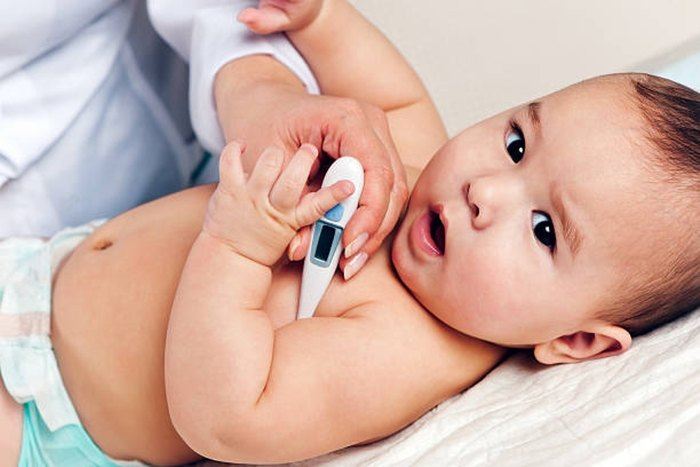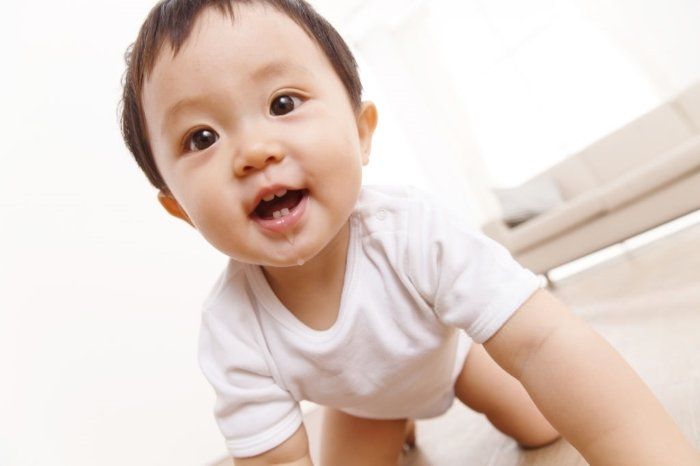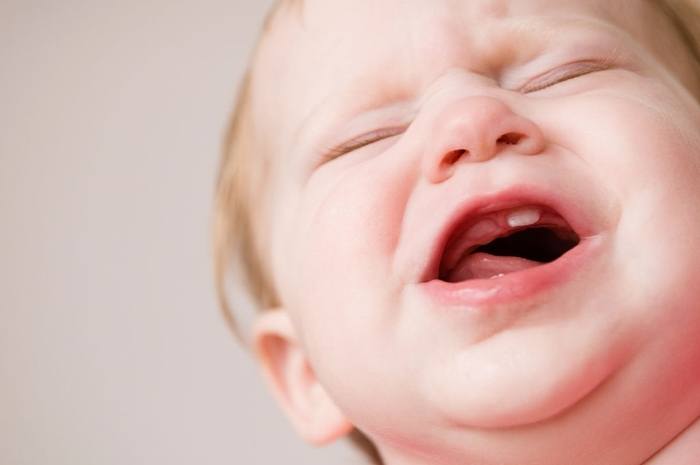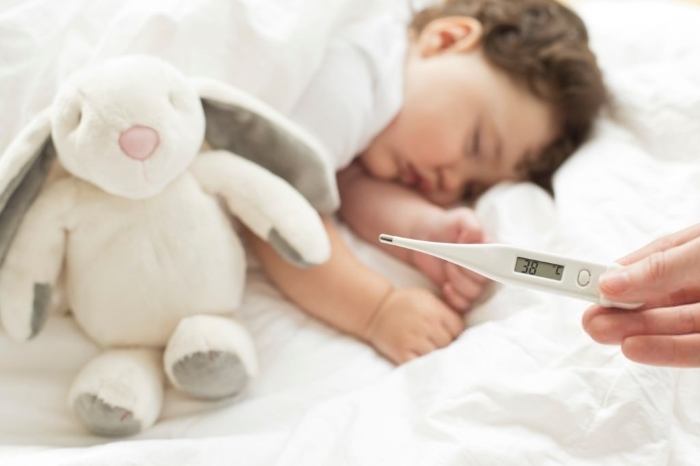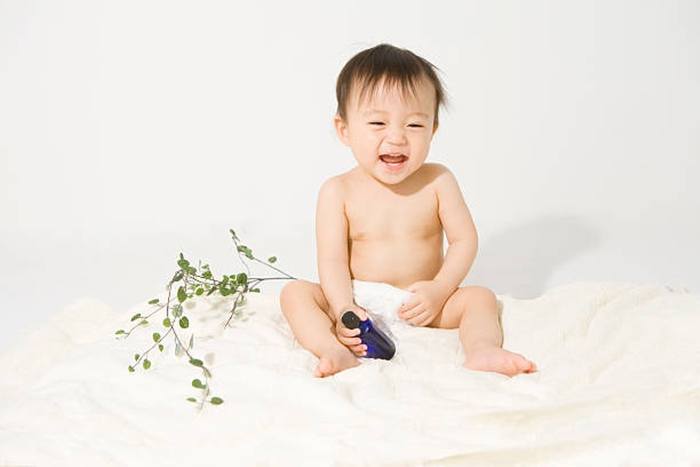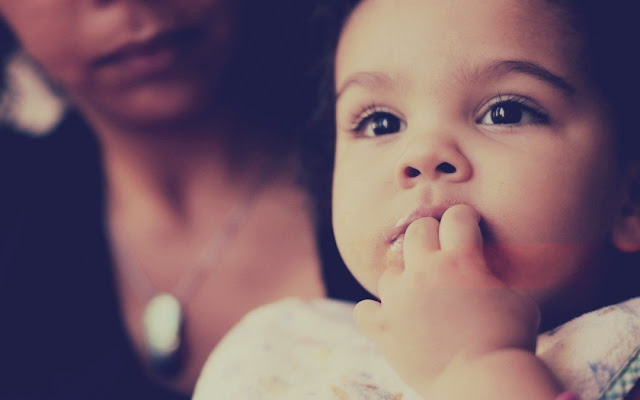A mother of 2 once expressed concern that something was wrong with her second baby.
Because he started teething so late…
She said her first child was teething at 4 months.
Her second baby was now 6 months, and he showed no signs of a tooth yet.
The thing about teething is that the timing and symptoms vary between babies.
It can be difficult to tell if it’s teething or something else bothering your baby.
Understanding the teething process, general timing, and order of tooth eruption can help.
What Is Teething?
The medical term for teething is odontiasis (pronounced oh-don-tahy-uh-sis), and is defined as the eruption of an infant’s tooth that breaks through the gums. The first set of teeth are called primary, or baby teeth, and all 20 baby teeth will typically be in place by the time your child is 3 years old.You may be wondering, “when do children get their permanent teeth?”
Starting around the age 6, children will begin to see these baby teeth fall out and will be replaced by permanent teeth erupting. It can take up to a decade for the entirety of the permanent teeth to come in. While there are usually only 20 baby teeth, there can be up to 32 permanent teeth.
When Do Babies Start Teething?
A common teething age for when babies start teething is around 4-6 months old, and the teething process lasts until they are about 30 months.However, if the child starts to exhibit signs of teething at 3 months old, this is also completely normal. The early teething symptoms can be due to heredity, or if the child is biting and chewing a lot, it can bring on teething earlier.
Does this mean your child will exhibit teething signs and symptoms their first 3 years of life? Absolutely not! In most cases, your baby will get 12 teeth during their first year of life, followed by 4, one-year molars and 4, two-year molars.
When those teeth come in, especially the molars during years 2 and 3, this will be a unique experience for each child. Some babies get teeth in pairs, and they quickly come in one after another, while others might wait weeks or even months before a mirroring tooth erupts.

What Is The Sequence At Which Teeth Come In?
You may be wondering when do babies get teeth after they start the teething journey. Each child’s teething experience is different, from the age it starts and continues, to the symptoms they feel.Below is an average age range of baby teeth order for each set of teeth that will be coming in. However, do not be concerned if your child starts earlier or later than these, as each child is different. While signs a baby is teething can start as early as 3 months, most parents see teeth start to come in around 6 months.
6-10 months – The Two Bottom Front Teeth – The Central Incisors
8-12 months – The Two Top Front Teeth – The Central Incisors
9-13 months – The Sides of the Top Front Teeth – The Top Lateral Incisors
10-16 months – The Sides of the Bottom Front Teeth – The Bottom Lateral Incisors
13-19 months – The Back Teeth – The Molars
17-23 months – Between Incisors and Molars – The Canines
23-33 months – The Second Molars of Child Develop

When Should I Be Concerned If My Babies Teeth Haven’t Erupted?
Teething age varies significantly as babies develop at different rates.Very rarely, some babies are born are born with teeth, known as natal teeth, or some babies have teeth emerge within their first 30 days, which are known as neonatal teeth. Just as these occurrences are not concerning, a child’s late development of teeth is usually not troubling.
A lot of moms and dads wonder what age to start worrying about late bloomers. If everything with their hair, skin, and bone growth seems normal, this is a good indication that nothing is wrong. It is not uncommon for a baby’s first tooth to appear as late as their first birthday.
Most parents and professionals recommend planning your child’s first dental check-up around 12 months anyway, so if you have any concerns, you can schedule an appointment and have a pediatric dentist examine your child’s mouth and reassure you.
Late teething might be due to genetic reasons that run in the family, or underlying conditions of a health problem could cause it. In some cases, babies who were born premature or at a low birth weight get their teeth late. Malnutrition and a deficiency in vitamins and minerals, which happens from inadequate breastfeeding and low supplementation from infant formula, can also be a cause of delayed tooth eruption.
If your child is developing teeth very late, most mothers recommend cutting all food into tiny cubes that the baby can chew with their gums, or reduce foods down into purees to make mealtime easier.
What are the Symptoms of Teething to Watch For?
For a few lucky babies, teething symptoms may not occur at all. However, for the majority of babies, signs that your baby is teething can last anywhere from a few days to several months.No more than 1/3 of babies have any one teething symptom, so it is essential to look out for any and all signs to be sure that your baby is teething.
When babies start teething, common teething signs & symptoms include:
- Drooling
- Swollen/red gums
- Trying to chew/bite everything
- Irritability
- Trouble Sleeping
- Decreased appetite
- Rubbing their face
- Grabbing their ears
- A visible tooth below the gum

A common misconception is that fever, diarrhea, and vomiting are symptoms of teething. Some mothers report a slight fever (under 100 degrees) in their teething baby. If your child is exhibiting these three symptoms, such as a fever above 100 degrees, it is most likely not a result of teething, and you should seek advice from a medical professional.
Excessive drooling is normal and can sometimes cause a facial rash during teething. Be sure to wipe any excess drool continuously, and if the symptom persists, contact a medical professional to make sure the rash is not a symptom of another problem.
Remember that each babies experience is highly personal, and they may exhibit any of these symptoms at once or separately. Keep a lookout for these symptoms because once you realize your child is teething, you can take proper steps to ease their experience and provide them comfort.
How Can I Help My Infant During the Start of Teething?
Your child might seem uncomfortable, and you may want to offer them some soothing teething relief from the ache that comes with teething. There are a few safe and natural teething remedies to help your teething baby if they are experiencing discomfort.- Use a clean finger and apply pressure by rubbing your baby’s gums
- Try a chilled spoon or chilled teething ring, always chilled in the fridge and never the freezer

What Should I Look For in Teething Toys & Necklaces?
Plastic products are notorious for containing dangerous and toxic chemicals, such as phthalates. Studies show that phthalate exposure in the uterus leads to birth defects and weight and future fertility issues. Ongoing studies are examining the link between phthalate exposure and asthma, obesity, and other health problems.The best way to avoid phthalates is to read the labels and avoid anything that lists ingredients such as phthalates, bisphenol A (BPA), and fragrance. If you are unsure or the label is unclear, call the manufacturer to confirm, as nothing is more important than the health and safety of your child.
A favorite teething accessory among mothers is a silicone teething necklace. As a mother, your child might be drawn to chewing on your necklace while you are holding your baby. A silicone teething necklace is a stylish yet safe alternative to this problem. It keeps the baby preoccupied, and babies will enjoy the feel of the silicone on their gums, as it will provide relief for their aching gums.
Kute Keiki recognizes the need to keep child health and safety at the forefront and aims to provide a high-quality and all-natural teething solutions for when babies start teething.
Published from the Blog of Kute Keiki
Original Post -- https://www.kutekeiki.com/teething/when-do-babies-start-teething/




